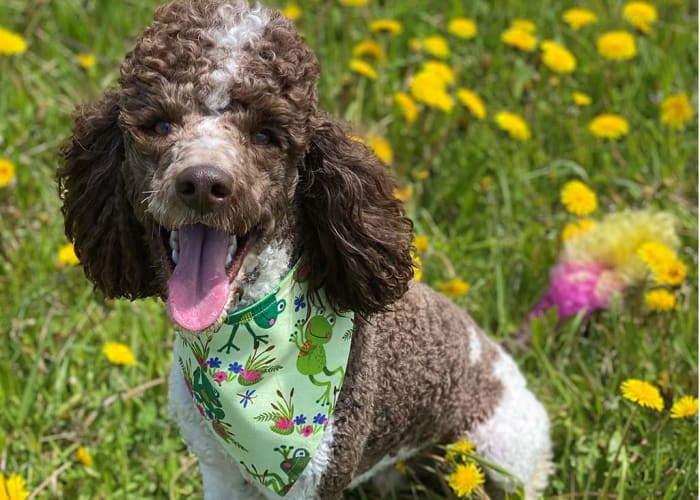Fear-Free Certification
When veterinary professionals work to become Fear-Free Certified, they demonstrate their commitment to providing their patients with veterinary care that aims to reduce the fear, anxiety, and stress that frequently accompanies a trip to the vet.
Our Fear-Free Certified team members have completed extensive training on how to create a calm and welcoming environment for pets, as well as how to identify when an animal is fearful or anxious and requires a modified approach.

Fear-Free Techniques
West Coast Veterinary Services is committed to reducing patient stress, anxiety, and fear while providing the best possible medical care.
Small things we do to improve your pet's experience at our hospital include providing treats, Kongs, mats, and hiding areas; allowing cats to stay in their carriers or dogs to sit on their family's laps; pre-visit medications as needed; and modifying our handling techniques.
Many of our staff members have worked hard to become Fear-Free certified as part of their commitment to providing excellent veterinary care.
We believe your pet will appreciate our fear-free approach.
How We Implement Fear-Free
At our veterinary clinic, many of our professionals are trained in Fear-Free practices and philosophies. We work with our patients and their owners to undertake the following steps before and during each appointment:
- Good Communication Between Pets & People
We start by understanding and identifying how pets communicate signs of stress to us.
These signs can include a number of subtle or obvious signals, from a tense expression or dilated pupils to growling, hissing or a tucked tail — just to name a few.
We also discuss the pet's known stressors with the owner, which can include sounds, scents, discomfort, disease processes and unfamiliar people.
Getting to know our canine and feline clients and understanding what stresses them and how they communicate that stress, helps us better manage it during their visits.
We ask the family to share if there is something that causes fear, anxiety or stress (FAS). We can help!
- Planning Ahead
An anxiety-free veterinary appointment starts at home. Let us know if your pet gets stressed going to the vet. We can offer suggestions for things to do at home before the visit. There may be options to send supplements or medication home before the visit to help with car sickness or to help decrease the level of stress at the vet.
Let us know if your pet gets stressed coming into the lobby or meeting new people or other animals. We can have you wait in the car or in our outside waiting area then come directly into the exam room. We have several entrances to help.
Cats and small- to medium-sized dogs should be acclimated to their carriers. This can be accomplished by leaving the carrier out in an area of the home where the pet likes to be. Place a towel over the top of the carrier to help create a safe place with familiar scents.
The carrier should be outfitted with toys, soft and comfortable bedding or a non-slip mat, and should have a top-off option to make it more accessible.
You can also spray cat or dog pheromones in the carrier or, for larger dogs, onto a bandana.
If transporting a medium to large dog, be sure to use an approved restraint device in the car. The drive to the vet can be kept low-stress with calm music or silence and by avoiding hard stops or starts.
Bring your pet's favourite treats or toys to the visit.
- A Calm, Quiet Environment
At our veterinary office, we do our best to keep the atmosphere calm, quiet, and positive.
To help reduce your pet's stress in the waiting area, keep cats and dogs separate as much as possible. Cat carriers should be kept off the floor and on a sturdy table or chair. Keep your dog leashed and close to your side to minimize interaction with other waiting pets.
When you arrive, you and your pet will receive a warm and friendly welcome. We want you to know that you are important to us.
As dogs and cats are often sensitive to loud noises and quick movements, during the appointment, our veterinary team will remain calm, speak in quiet voices, and approach your pet in a slow, careful manner.
- Treats & Toys
To encourage a positive experience and decrease fear, stress, and anxiety during the visit, rewards such as treats, toys, or petting or brushing can be used during an exam or when obtaining diagnostics, as long as it doesn’t contradict why the pet is at the hospital.
We have treats throughout the hospital, but if your cat or dog is on a special diet, we encourage you to bring their treats or food with you to the visit.
- Sedation & Restraint Options
We use treats, petting, and toys as distractions. Families are allowed to be with their pets during procedures (excluding sedation, anesthesia, X-rays, and while the hospital is closed). The staff will direct families on how they can play a part in their pet's treatment to ensure lower stress for the animal and to keep staff and family safe during the procedure.
In some cases, we will reschedule a procedure if the pet is stressed. This allows us to send home medications before performing the procedures.
If restraint is required during a procedure, our trained staff may use a towel wrap, a muzzle, or an Elizabethan collar to ensure the patient is safe and comfortable during the process. A mild sedative may be recommended to make sure that the procedure can be performed safely and is less stressful for the patient.
If you already know that your pet experiences anxiety or stress when visiting the vet, it may be beneficial for the veterinarian to provide you with a mild sedative to give to your pet at home prior to an appointment.
